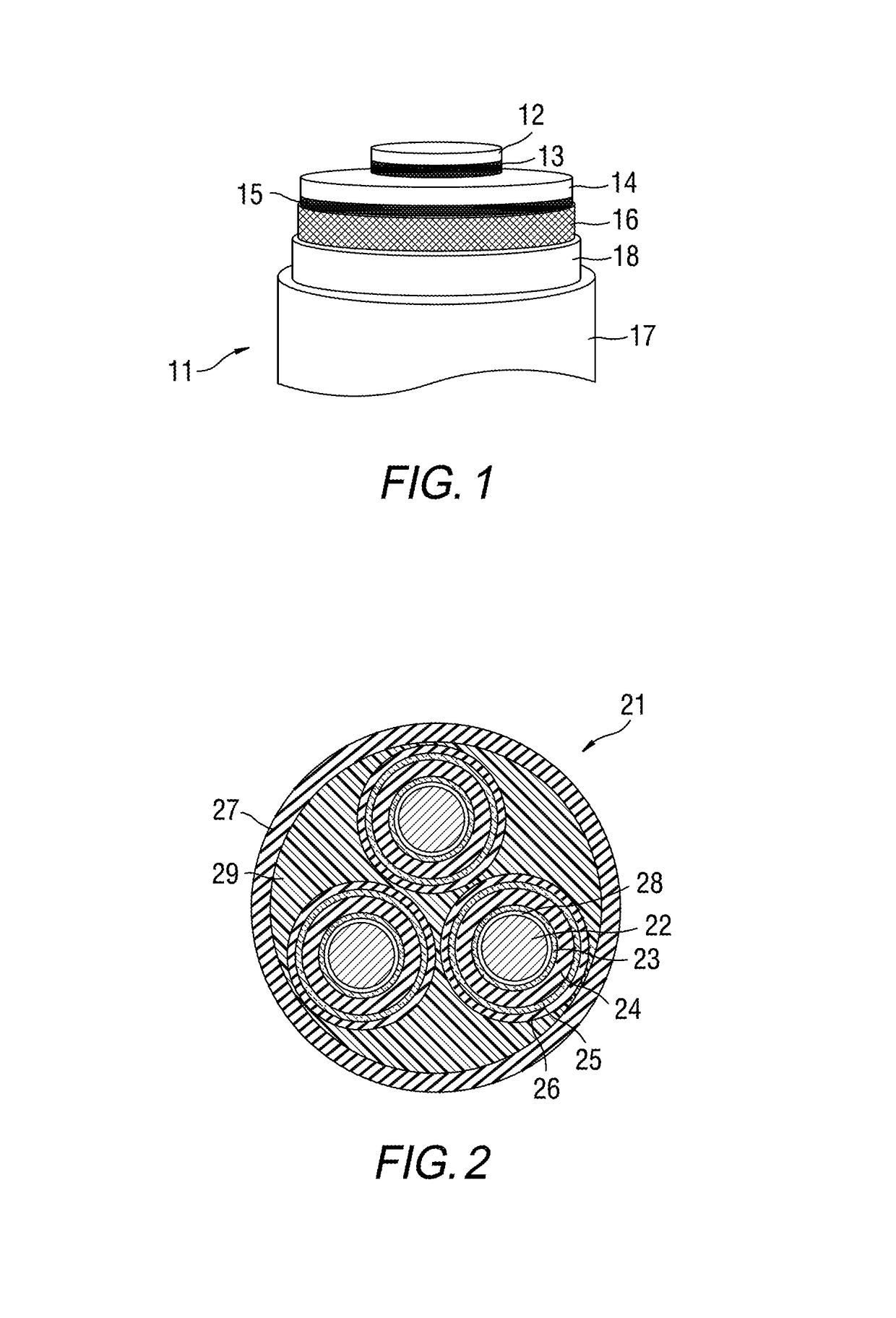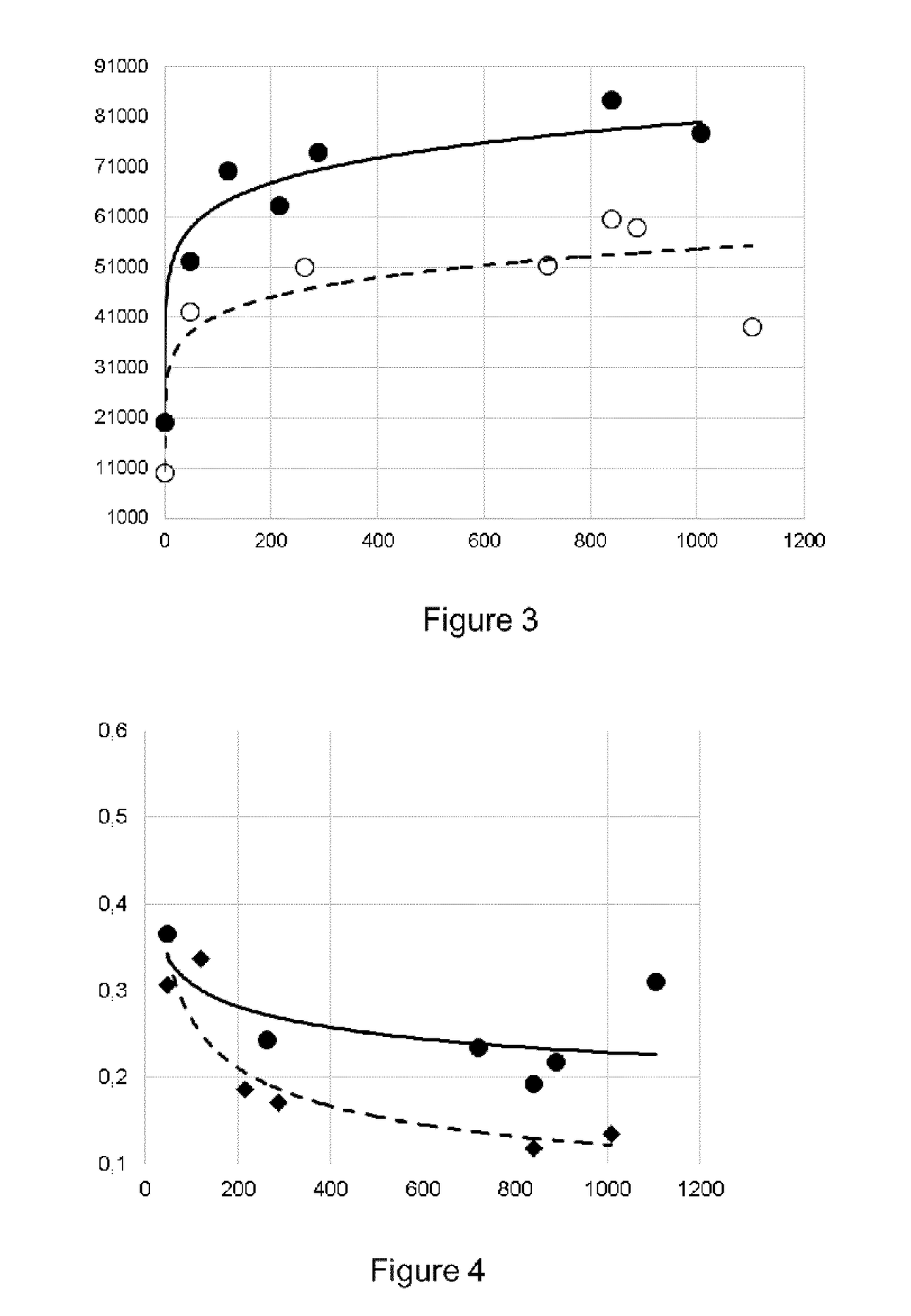Power cable having an aluminum corrosion inhibitor
a technology of corrosion inhibitor and power cable, which is applied in the direction of insulated conductors, cables, conductors, etc., can solve the problems of water penetration and stagnation within the cable core, and cannot be excluded from water penetration and stagnation
- Summary
- Abstract
- Description
- Claims
- Application Information
AI Technical Summary
Benefits of technology
Problems solved by technology
Method used
Image
Examples
example 1
Synthesis of 5-phenyl-1-hydroxy-(1H)-tetrazole
Step 1: Preparation of N-Hydroxybenzimidoyl Chloride
[0096]Ethanol (30 mL) was poured in a 250 mL three-necked round-bottomed flask equipped with internal temperature probe, reflux condenser and nitrogen inlet. Benzoyl chloride (19.71 mL, 23.87 g, 0.17 moles) was added via syringe and the solution was stirred during the addition. Hydroxylamine hydrochloride (21.20 mL, 35.41 g, 0.51 moles) was added in one portion, followed by sodium hydroxide 97% (27.2 g, 0.68 moles). The reaction flask was placed in an oil bath and heated at 60° C. with stirring for 1 hour. The reaction flask was removed from the oil bath and was left to cool to ambient temperature.
[0097]The mixture was transferred to a single-necked round-bottom flask and concentrated by rotary evaporation at temperature of 45° C. and vacuum of 40 mbar.
[0098]The solid residue was transferred to a separatory funnel and was extracted three times with ethyl acetate. The combined organic la...
example 2
Evaluation of Corrosion Inhibiting Property
[0113]The 5-phenyl-1-hydroxy-(1H)-tetrazole corrosion inhibitor prepared in Example 1 was used to evaluate the corrosion inhibition of the aluminium shield 16 in the cable 11 of FIG. 1.
[0114]The three-electrode linear polarization resistance (LPR) method was used for evaluating the corrosion rate in presence and absence of inhibitor, as shown, for example, in http: / / www.gamry.com / application-notes / corrosion-coatings / corrosion-techniques-polarization-resistance / .
[0115]The three-electrode system was realized by using (i) a Standard Calomel Reference Electrode as a reference electrode, (ii) an aluminium screen, insulated with a polyester tape, as a working electrode (WE), and (iii) an aluminium wire of 1.6 mm diameter and 45 cm long, insulated with a polyester tape, inserted between the aluminium screen and a polyethylene outer sheath, as a counter electrode (CE).
[0116]For comparison purpose, two systems were realized, with and without corrosi...
PUM
| Property | Measurement | Unit |
|---|---|---|
| voltage | aaaaa | aaaaa |
| voltage | aaaaa | aaaaa |
| temperatures | aaaaa | aaaaa |
Abstract
Description
Claims
Application Information
 Login to View More
Login to View More - R&D
- Intellectual Property
- Life Sciences
- Materials
- Tech Scout
- Unparalleled Data Quality
- Higher Quality Content
- 60% Fewer Hallucinations
Browse by: Latest US Patents, China's latest patents, Technical Efficacy Thesaurus, Application Domain, Technology Topic, Popular Technical Reports.
© 2025 PatSnap. All rights reserved.Legal|Privacy policy|Modern Slavery Act Transparency Statement|Sitemap|About US| Contact US: help@patsnap.com



